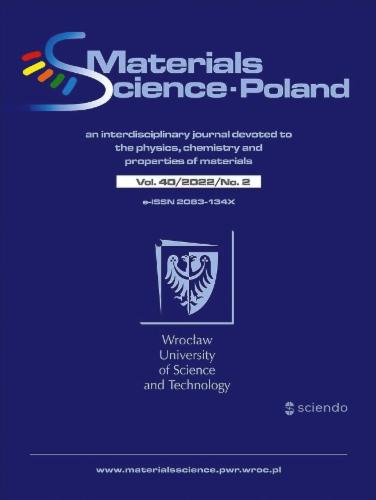Strengthening of fiber-reinforced geopolymer concrete after high-temperature exposure using CFRP sheets
Seismic performance of precast prestressed concrete frame joints with buckle mechanical connection of reinforcing bars
Optimizing δ-ferrite structure to enhance high-temperature elongation in ER308L stainless steel deposited metal
Obtaining microstructures of hot-rolled dual-phase steel plates
Material Science-Poland online ISSN: 2083-134X (est. in 1974 as Materials Science, ISSN 0137-1339) is an interdisciplinary journal devoted to experimental research into results on the relationships between structure, processing, properties, technology, and uses of materials. Original research articles and review can be only submitted
The review process for submitted papers is a blind peer review.
The total publication fee is 500 EUR.
The payment should be done after acceptance and before publishing the manuscript to the following bank account in POLAND:
PL60 1090 2402 0000 0001 4890 0917
SWIFT (BIC): WBKPPLPPXXX.
Title: Materials Science-Poland, No. of manuscript.
Archiving
Sciendo archives the contents of this journal in Portico - digital long-term preservation service of scholarly books, journals and collections.
Plagiarism Policy
The editorial board is participating in a growing community of Similarity Check System's users in order to ensure that the content published is original and trustworthy. Similarity Check is a medium that allows for comprehensive manuscripts screening, aimed to eliminate plagiarism and provide a high standard and quality peer-review process.
BACK ISSUES:
Back issues papers from vol. 20 / 2002 are available at: www.materialsscience.pwr.wroc.pl/index.php?id=5
